15 Terrifying Paintings That Will Send Shivers Down Your Spine
Art is a powerful form of expression that often evokes a range of emotions in us. At times, a single painting can evoke fear and terror in our bones, thanks to its haunting imagery and eerie facial expressions. It's a testament to the power of art that it can create such a deep emotional impact on us. In this blog post, we've curated a list of the 15 most intriguing and creepy paintings in the history of art that are sure to send shivers down your spine. So, buckle up and get ready for a journey into the world of spine-chilling art!
1. Salvador Dali, "The Face of War" (1940)
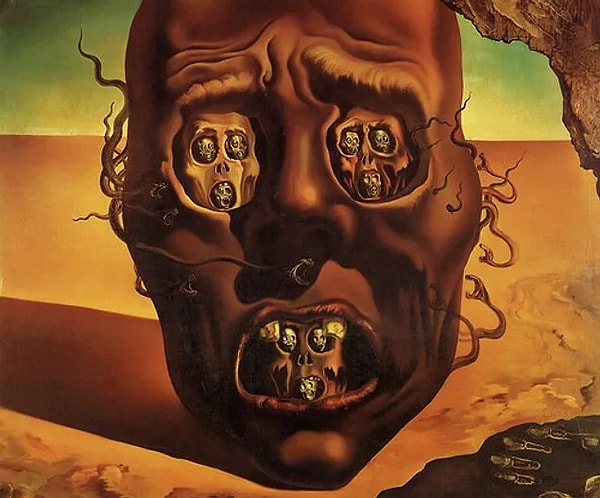
Lice Rata
Dali painted this painting when he lived in California. His past traumas and his views on the war inspired him to make this painting. The famous artist believed that his artistic vision had premonitions of war from time to time.
2. Francisco Goya, "Saturn Devouring His Son" (1819-1823)
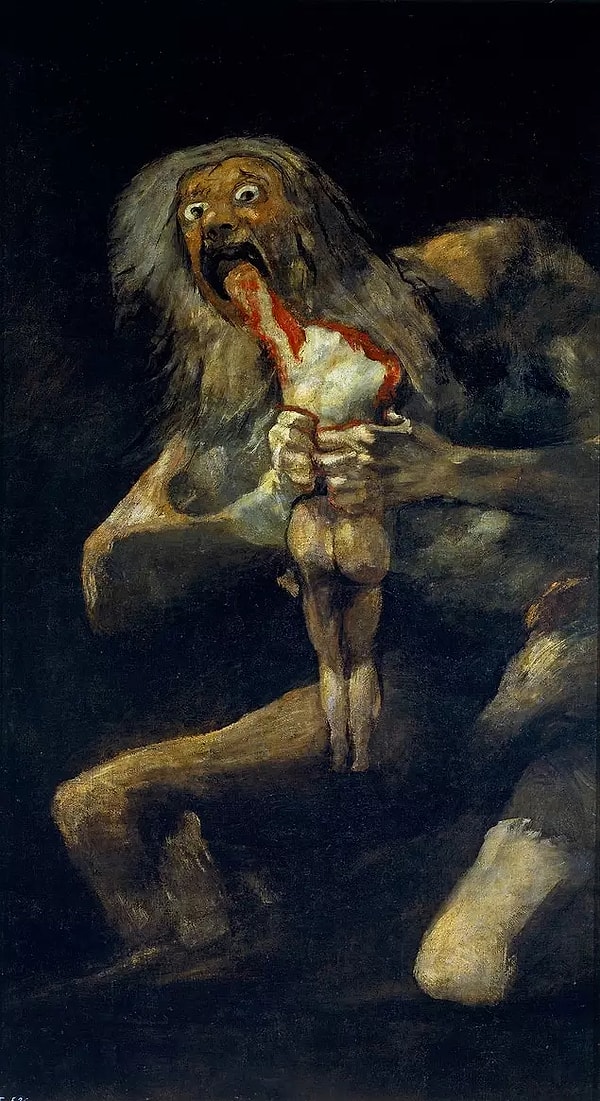
According to legend, titan Saturn learned in advance by prophecy that one of his children would succeed him and take over his sovereignty. As expected, Saturn, who did not want this and wanted to maintain his authority, ate one of his children. However, Saturn did not know that his wife Rei was hiding their youngest child Zeus. In the end, Zeus won the victory over the giants.
3. Caravaggio, "Medusa" (1597)
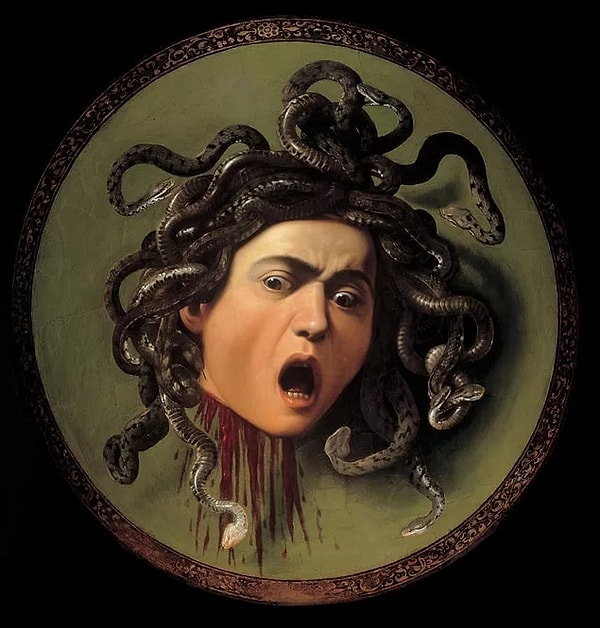
According to the myth, Perseus, who approaches and cuts off Medusa's head by looking at the image reflected from her shield, also allows Medusa to see herself one last time.
4. Hans Memling, "Hell" (1485)
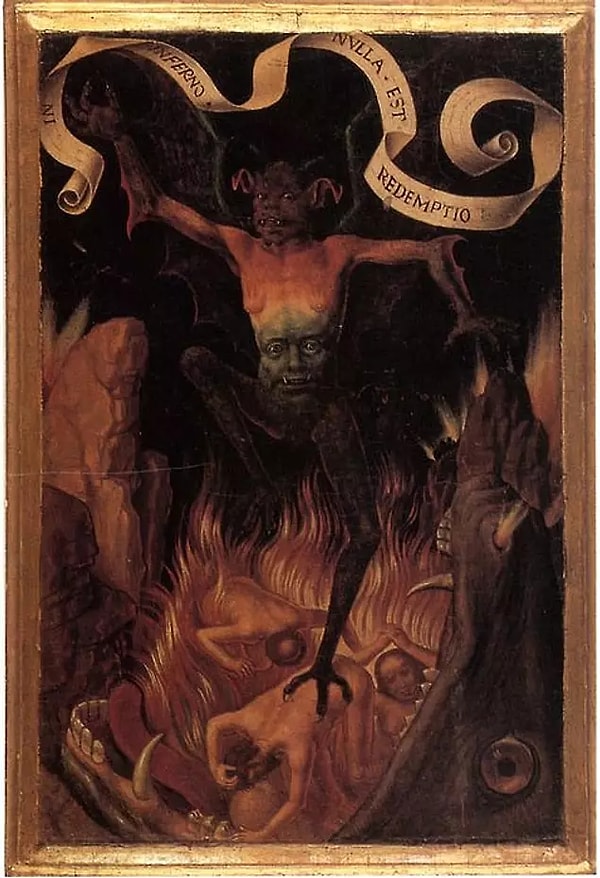
The devil is depicted dancing on burning people in hell. On the other hand, in the writing on Satan, there is the expression 'There is no salvation in Hell'...
5. Gerard David, "The Judgment of Cambyses" (1498-1499)
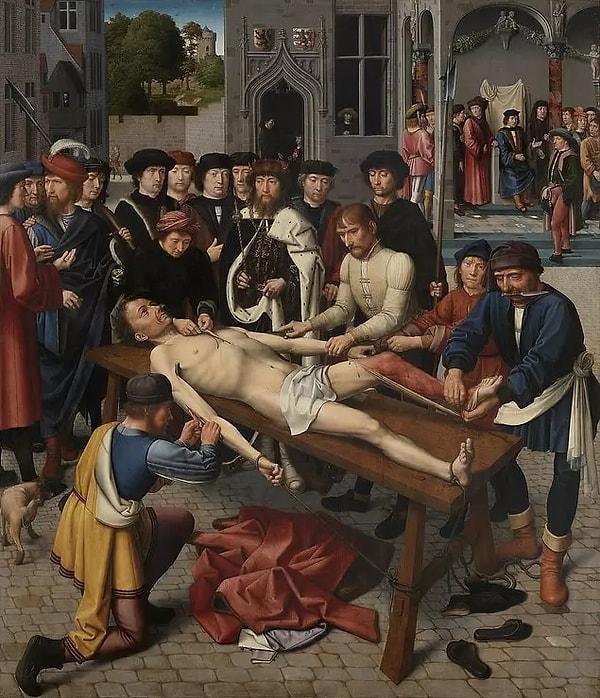
The Persian king Cambyses II, from whom the work takes its name, ordered the judge Samosnes to be skinned alive on the grounds of corruption. It is also being done publicly to set an example for the public...
6. Ivan Albright, "Picture of Dorian Gray" (1943)

In this work, which is an exact reflection of Oscar Wilde's famous work, the part where the painting gets uglier and older instead of himself with the passage of time and the crimes he commits is depicted specifically.
7. An anonymous German artist, "Gregor Baci" (16. century)
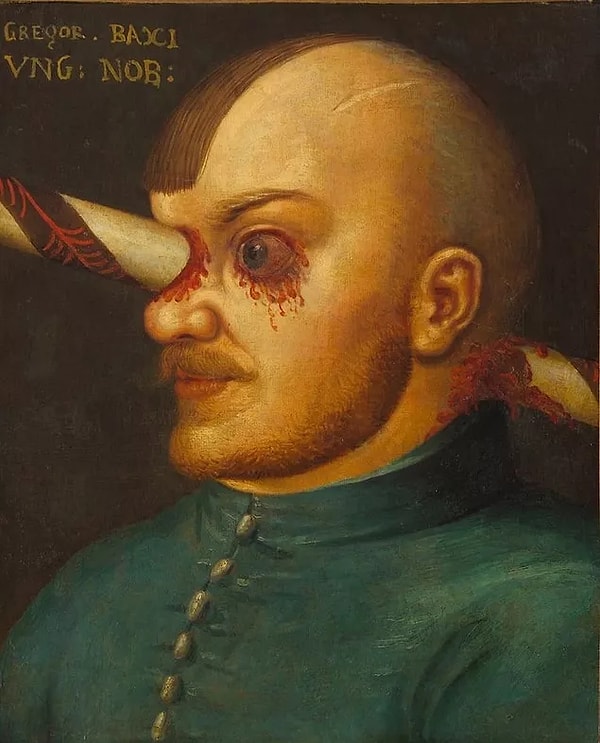
It is believed that a Hungarian man named Gregor Baci, who is believed to have been pierced in the eye with a spear during a tournament in the sixteenth century, lived for another year with a spear fragment in his eye!
8. Jean Fouquet, "Madonna surrounded by Seraphim and Cherubim" (1452)
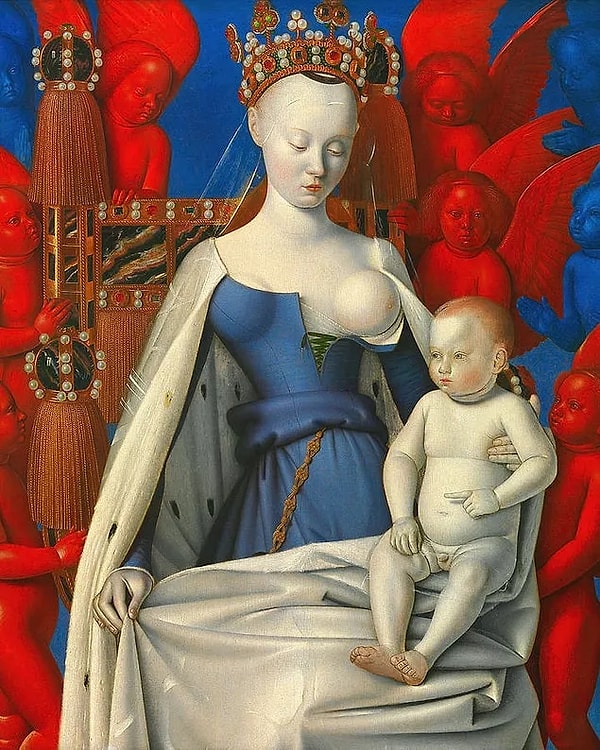
This painting is both interesting and wonderful, and the only reason is not because of the red angels surrounding it... Fouquet deviated from the Madonna (Virgin Mary) generally depicted in this work and put forward his own depiction of the Virgin Mary. In Fouquet's work, which takes its place among the most unusual depictions of the Virgin Mary, Mary on her throne is depicted as the empress of heaven. Another interesting part is that her chest is clearly depicted, because it is normally seen as a sexual image. Imagine how surprised art lovers in the fifteenth century were at this depiction...
9. Hieronymus Bosch, "The Garden of Earthly Delights" (1503-1504)
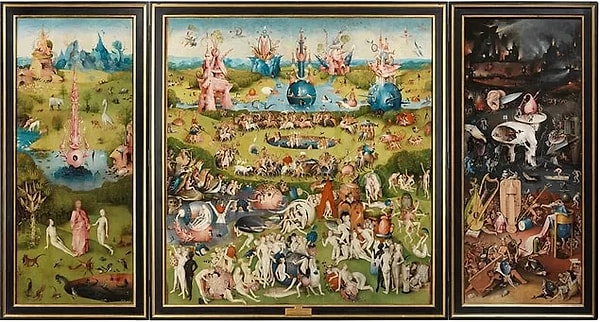
The table depicts Biblical truths, the fate of humanity and the consequences of our fatal flaws. When you take a look, you will notice that the artist is painting a complete human chaos. When we look at the sky, we see that people are riding a swan-lion chimera (monster), when we look down, we see that each person is busy with something so strange in an interesting position. And on the right panel stands hell itself: Figuratively speaking, it is the apocalypse.
If you want a closer look:
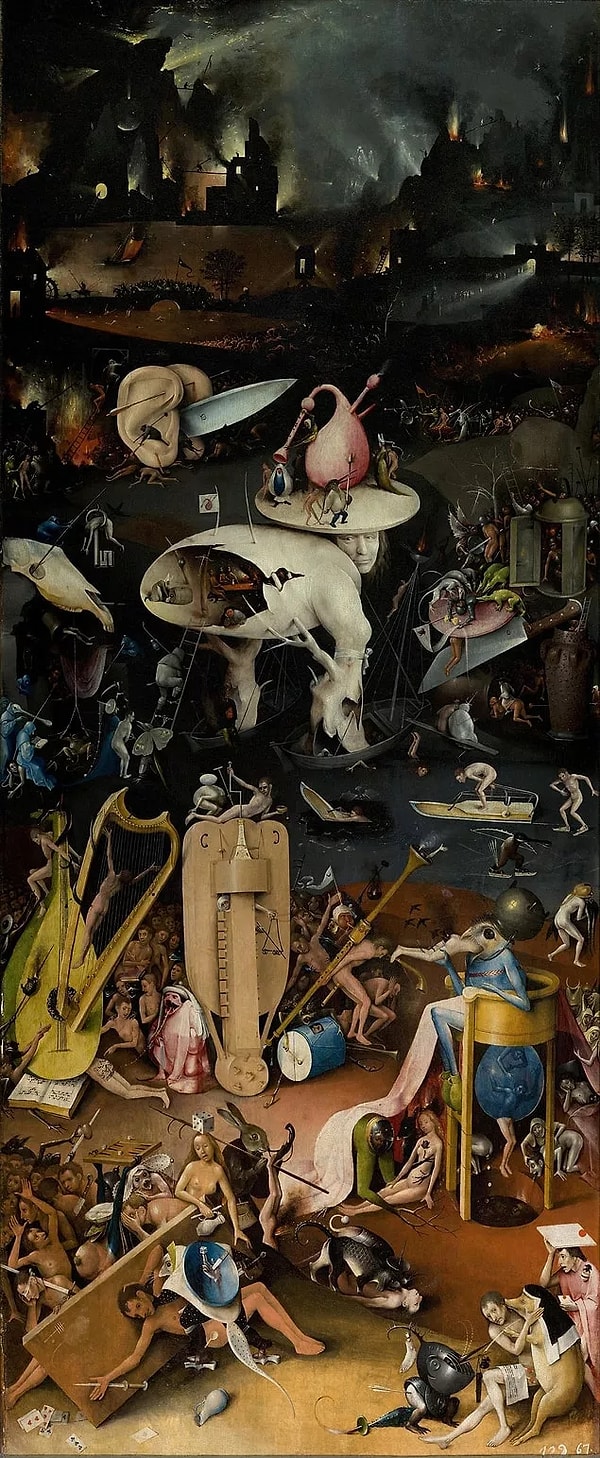
10. Quentin Matsys, "The Ugly Duchess" (1513)
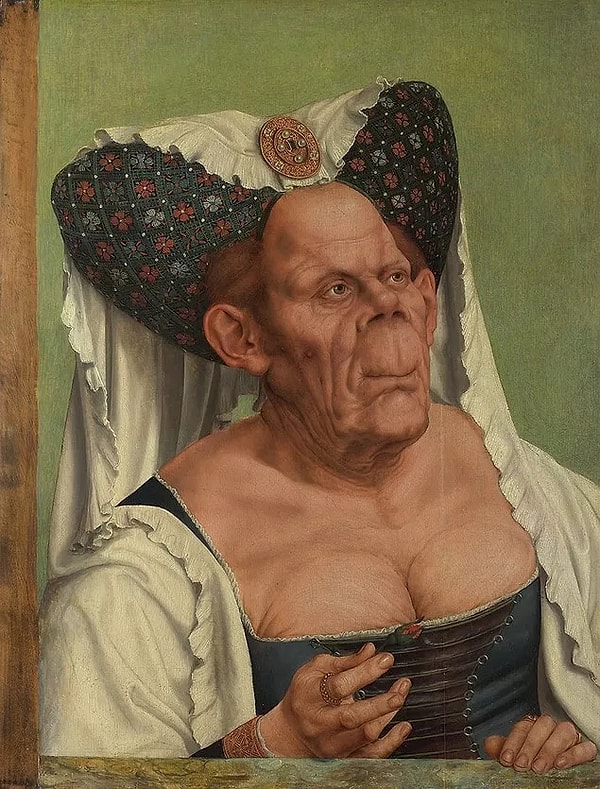
For a long time, scientists thought that this painting was a work of satire. In the picture showing a grotesque old woman with wrinkled skin and faded breasts, the artist prefers to dress quite ornate and wealthy as a choice of clothing, but if we think about the period he is painting, there is an outdated style of clothing. We finally understand that this picture mocks the elderly and those who are unattractive because of their behavior. But after the latest research on the picture, we found out that this is not the truth: it turned out that this woman had advanced stages of Paget's disease, which causes bone deformities.
11. Ilya Repin, "Ivan the Terrible and His Son Ivan" (1581)
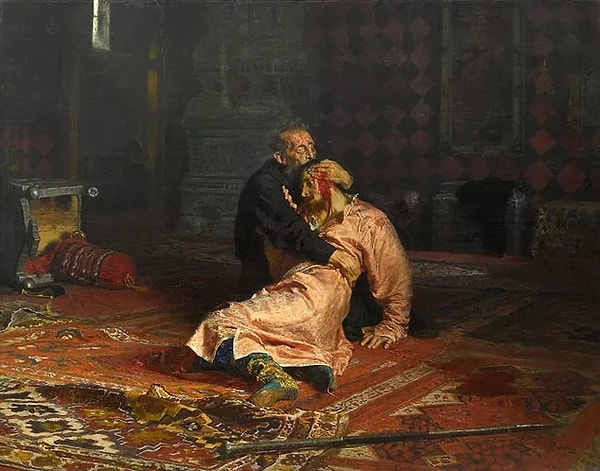
This picture shows the son dying in his father's arms after the first Russian Wed Ivan the Fourth hit his son Ivan Ivanovich on the temple with his staff as a result of a tantrum. It is incredible that the expression of fear, horror and regret on the father's face is depicted so realistically...
12. Jusepe de Ribera, "Magdalena Ventura with Her Husband and Son / The Bearded Woman" (1631)
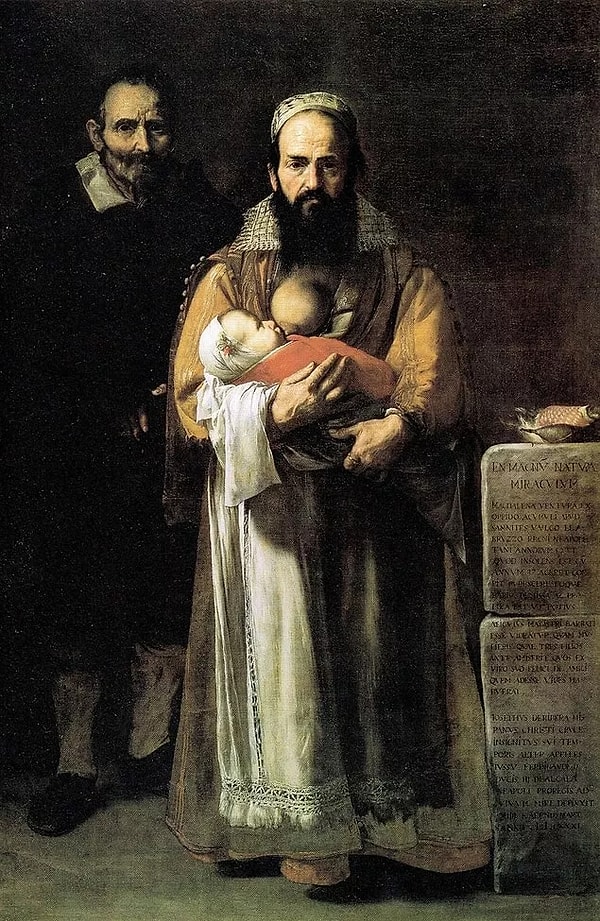
The woman in front is actually the Bearded Woman of the Abruzzi! Although gender is a flexible concept today, can we say that it was not very different in the past? This strange artwork by Jusepe de Ribera can give us a different idea. Magdalena was not someone who liked the beauty standards of the Renaissance period. As a result, she established her own beauty standards from the beginning! This also made her famous. Although her breasts look misshapen, Ribera painted them in a breastfeeding position to show that she is physically a woman.
13. William Adolphe-Bouguereau, "Dante and Virgil in Hell" (1850)
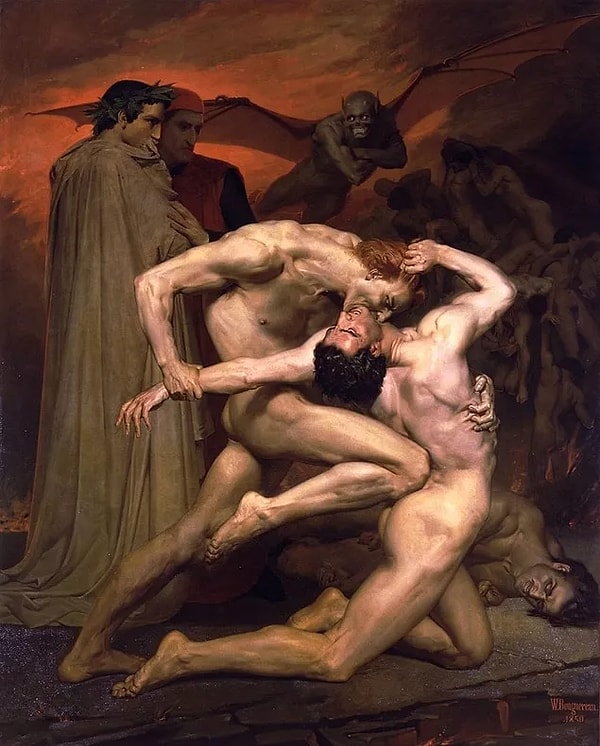
The famous artist was inspired by a page of Dante's Inferno while painting this painting. One of these two quarreling people is Cappuccio, who is an alchemist and a deviant, and the other is Gianni Schinni, who allegedly took the name of another man to get his money. Inspired by the story of two real executed criminals, Dante covered this topic in his epic poem. Dante and Virgil, on the other hand, stand behind Schinni and Cappochio. Dante watches him as he walks away from his friend Virgil.
14. Vincent van Gogh, "Skull of a Skeleton with Burning Cigarette" (1885-1886)
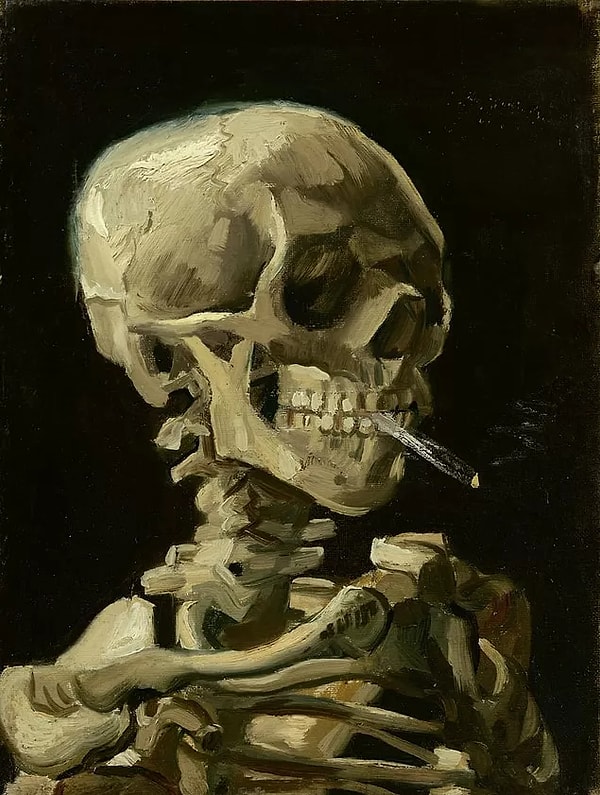
It is very likely that this painting was made by the famous artist in an anatomy lesson while he was studying painting. It is also focused on the possibility that Gogh, who we know is a fan of the phrase 'memento mori' (Remember that you are mortal), may have tried to paint this.
15. Francis Bacon, "Study after Velázquez's Portrait of Pope Innocent X" (1953)

It would not be wrong to say that most people are confused by Bacon's works... Apart from the use of contrasting colors, the painting looks pretty terrible. Although the origin story of the painting is not fully known, it comes from within a person to both look at the painting and not to look at it...
Which one of these paintings is your favorite? Let’s meet in the comments!
Keşfet ile ziyaret ettiğin tüm kategorileri tek akışta gör!


Send Comment